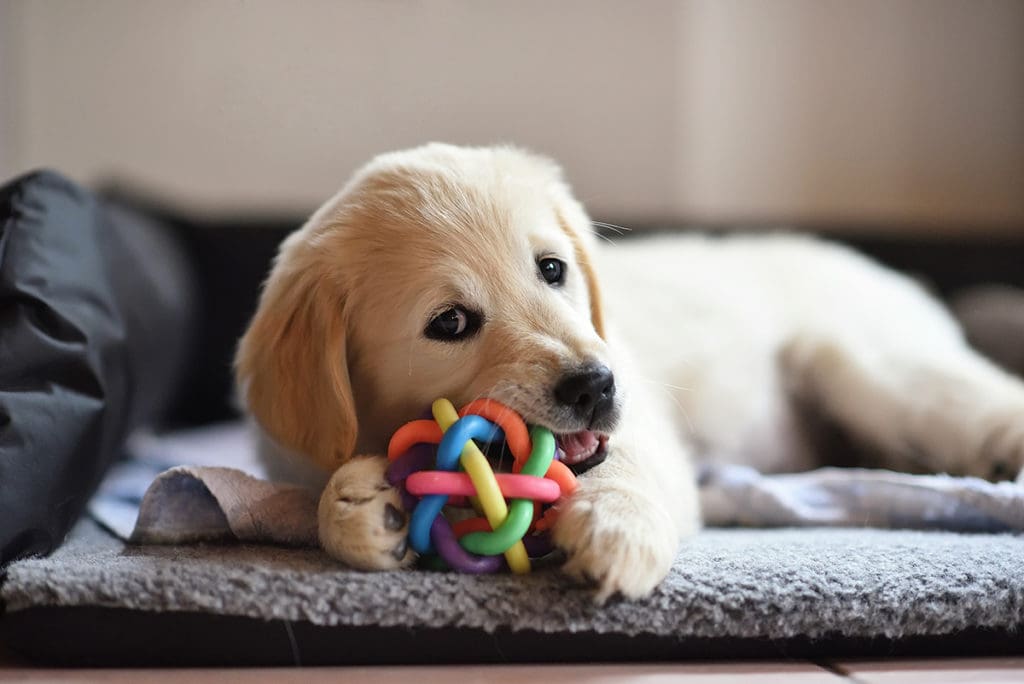Why does my dog put their mouth and paw on me?
Why does this happen
Many dogs will put their mouth and paw on us – not with any intention to hurt, but more to attract play and affection. This is known as mouthing and pawing. This most commonly occurs with puppies, but often continues into adulthood.

Your dog may be more prone to pawing and mouthing when they are pleased to see you, excited, and/or want to play. If you run around, make lots of noise, and make yourself exciting, your dog will think you are playing and naturally want to join in. The best way for them to join in is with their teeth and paws – these are the best tools they have – and without being taught how to play appropriately, they can often unintentionally cause us and others pain.
Play is a natural and important behaviour for puppies, as this allows them to learn valuable lessons with their litter mates, such as pressure, status, and communicating with others. Continuing to play through life is extremely rewarding and valuable for most dogs and should be encouraged. Below you will find tips on how to help your dog learn a safer and more enjoyable way to play.
Mouthing and biting hands
It is important to remember that within the litter, most puppies learn about how much pressure they can put on their brothers and sisters, using their teeth, to enable fun play but not cause any pain or harm to their playmate. Dogs’ skin is normally protected by fur or hair, and therefore copes better with the dog’s naturally sharper teeth. Humans, however, have thinner more delicate skin, and aren’t used to contact with sharp teeth.
Aside from play, dogs (particularly puppies) also use their mouths to explore their environments by picking up objects and learning about their surroundings.
Some dogs have a very ‘soft’ mouth which enables them to carry a fragile object without damaging it, but that is a result of hundreds of years of working alongside people and selective breeding, and is a skill that the vast majority of dogs won’t have acquired, or even be able to learn.
Chewing
For dogs, chewing not only helps them to clean their teeth and to keep their jaws in good working condition, but it also satisfies the dog’s need to relax. It has also been shown to relieve stress, boredom, and be self-soothing. It is recommended for most dogs (who enjoy chewing) to have ample opportunity to do so at least 20 minutes per day. Our dogs are however entirely dependent upon us to guide them to what is safe and appropriate to chew, and with this, we have the responsibility to teach them and help them learn.
Teething
If your puppy is teething this may also be a contributing factor as to why they are mouthing you. Puppies who are teething need constant access to teething toys, which are available from any pet shop. Your puppy can then chew on them as much as they like which will help them choose to not direct it at you as often. Teething can be painful for your dog at times and so they need toys that are safe and will provide them with an outlet in order to help them feel better.
How to teach your dog not to mouth
The longer the behaviour is allowed to continue past the point where they have finished teething, at around six months, the harder it will become to change but, with a consistent, patient approach, this behaviour can be altered.
Pawing and scratching
Just as puppies need to learn not to chew or bite us, it is really important that they learn not to use their claws to damage fragile skin. The problem is often most noticeable with toddlers or elderly people but anyone can be hurt by the excitable use of a paw, not to mention damage to clothes and other surfaces.
In the first instance, a dog will use a paw to attract attention and it is a part of a natural play behaviour. As your dog develops, they will learn to repeat actions that achieve a result. A dog soon learns that, by pawing at your arm, you are likely to respond by giving them attention, whether that is play and fuss, or simply eye contact and you talking to them.
We love our dogs and want to demonstrate that love by responding to their needs and so, if we pat or stroke them when they ask for our attention, we will have unwittingly reinforced that behaviour.
This becomes more concrete if, when we stop and the dog again paws at us for the attention to be repeated, we simply oblige and reward that behaviour with more attention.
Unfortunately, your dog will not understand that they have a set of sharp claws at the end of their paw, as well as powerful dewclaws on the upper, inner part of the foot. Most dogs have dewclaws on their front feet, and they serve a valuable purpose, acting like a thumb to help the dog to hold an object like a chew, or to gain traction. They are often sharp and strong and can cause damage when they move their paw down from the action of pawing at you, even though they will be unaware of this.
While pawing may look cute as we celebrate the interaction we have between dogs and people, it is an example of undesirable behaviour and your dog will need your help to teach them what behaviour is appropriate. As in all examples of teaching, consistency on our part is vital and your dog will not understand if the behaviour appears acceptable at some times and unacceptable at others. This is even more important when there are multiple people involved in the interaction and teaching.
Remember
If you are interacting with your dog or puppy and they begin to mouth or scratch you, the best thing to do is stop what you are doing and keep calm and still for a few seconds. If they are still very excitable and haven’t yet stopped then pick up a toy and offer them that instead to redirect their attention. Give them praise for chewing and playing with their toy and encourage them to continue with this. This will help them learn the best and safest way to play. Your dog, no matter their age, should always have constant access to toys in a variety of textures and shapes.
The key thing to remember is that dogs and humans can have different styles of play, and so it is best to be patient and help them to learn a more enjoyable way to play for everyone involved; and not to assume they will understand how we would like them to interact with us without first being helped.
Help support our life-changing work...
Imagine if everyday tasks were so challenging or physically demanding they affected your quality of life. For many people living with a disability of families with a child with autism, that is their reality. Now imagine if a specially trained four-legged friend could restore your, or your family’s, independence.
The demand for our services is high and we can’t help as many people as we would like to without more funding. Please help us continue to bring people and dogs together to help make everyday life possible in so many extraordinary ways.
Every contribution, whatever size, is important and helps us make a difference.

